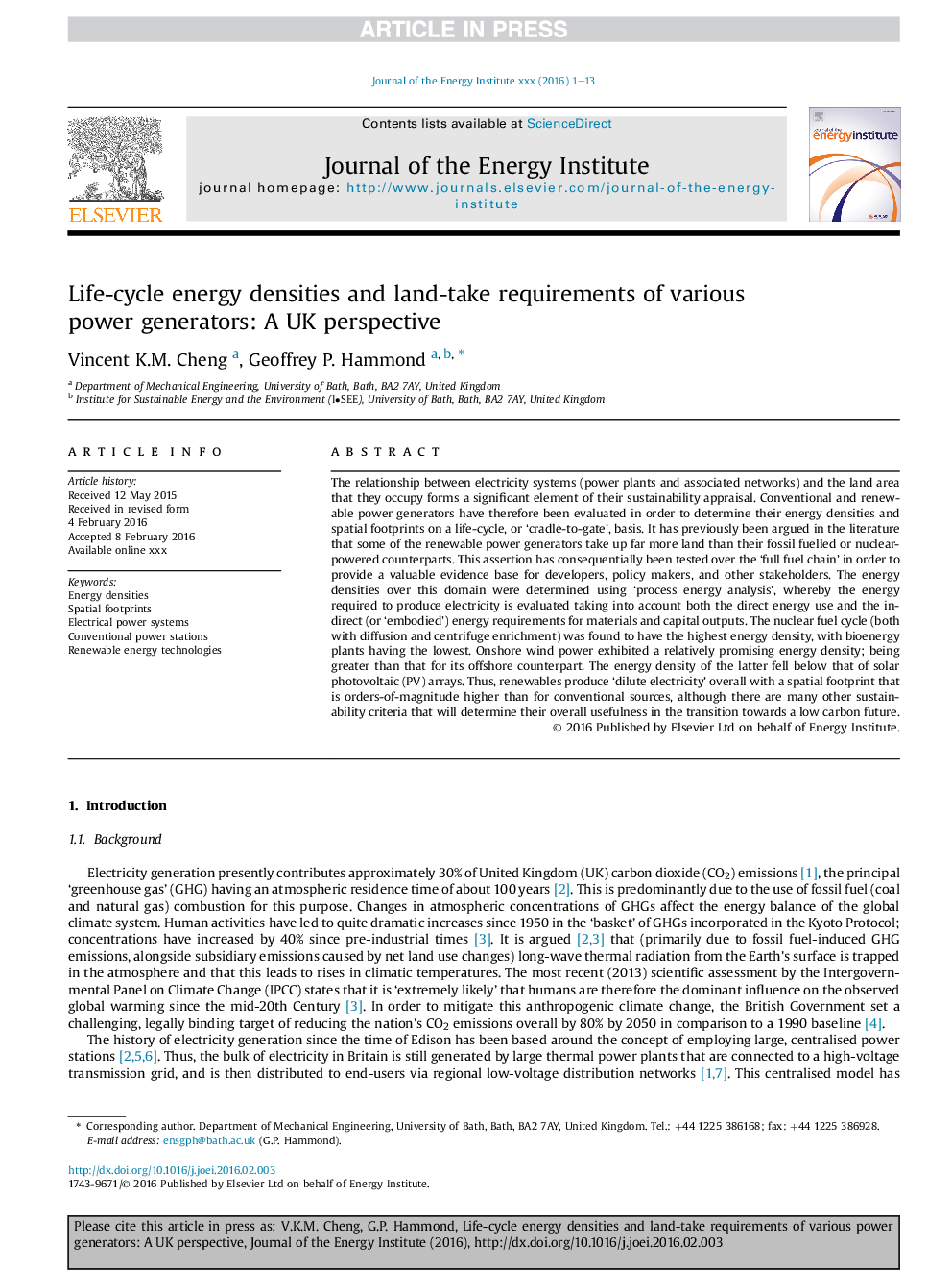| Article ID | Journal | Published Year | Pages | File Type |
|---|---|---|---|---|
| 8109148 | Journal of the Energy Institute | 2017 | 13 Pages |
Abstract
The relationship between electricity systems (power plants and associated networks) and the land area that they occupy forms a significant element of their sustainability appraisal. Conventional and renewable power generators have therefore been evaluated in order to determine their energy densities and spatial footprints on a life-cycle, or 'cradle-to-gate', basis. It has previously been argued in the literature that some of the renewable power generators take up far more land than their fossil fuelled or nuclear-powered counterparts. This assertion has consequentially been tested over the 'full fuel chain' in order to provide a valuable evidence base for developers, policy makers, and other stakeholders. The energy densities over this domain were determined using 'process energy analysis', whereby the energy required to produce electricity is evaluated taking into account both the direct energy use and the indirect (or 'embodied') energy requirements for materials and capital outputs. The nuclear fuel cycle (both with diffusion and centrifuge enrichment) was found to have the highest energy density, with bioenergy plants having the lowest. Onshore wind power exhibited a relatively promising energy density; being greater than that for its offshore counterpart. The energy density of the latter fell below that of solar photovoltaic (PV) arrays. Thus, renewables produce 'dilute electricity' overall with a spatial footprint that is orders-of-magnitude higher than for conventional sources, although there are many other sustainability criteria that will determine their overall usefulness in the transition towards a low carbon future.
Related Topics
Physical Sciences and Engineering
Energy
Energy Engineering and Power Technology
Authors
Vincent K.M. Cheng, Geoffrey P. Hammond,
